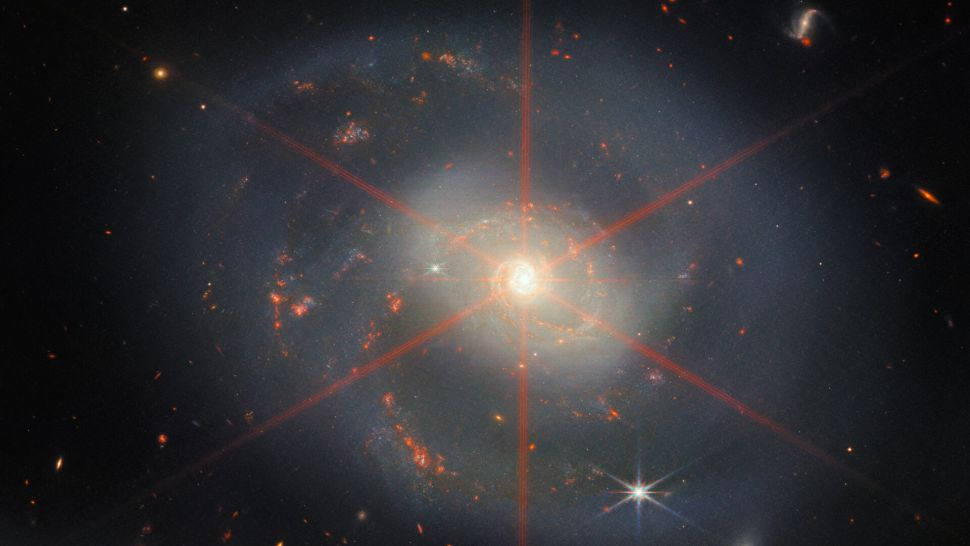Some 220 million light-years away, nestled in the constellation Pegasus, spiral galaxy NGC 7469 whirls around an active galactic nucleus (AGN). It’s one of the more well-studied galaxies in our universe, but the James Webb Space Telescope has just produced one of the most detailed photos of the wreath-shaped galaxy ever seen.
Because NGC 7469 faces us head-on, astronomers can observe its entire 90,000-light-year span. Of particular interest is its AGN, the bright region at its center where dust and gas light up as they’re consumed by the galaxy’s supermassive black hole. The structure isn’t uncommon, but what is unusual is that NGC 7469 has a starburst ring just 1,500 light-years from the AGN — an exceptionally close distance.
Since there is so much material packed into a relatively small area, it’s been difficult for scientists to peer into the AGN and its surrounding starburst. But that has now changed with Webb’s ultra-sensitive infrared imaging instruments.

The spiral galaxy NGC 7469 was imaged by the James Webb Space Telescope for the Great Observatories All-sky LIRGs Survey (GOALS). (Image credit: ESA/Webb, NASA & CSA, L. Armus, A. S. Evans)
This image has captured new details within NGC 7469’s AGN, including “very young star-forming clusters never seen before, as well as pockets of very warm, turbulent molecular gas, and direct evidence for the destruction of small dust grains within a few hundred light-years of the nucleus,” according to a statement(opens in new tab) from the European Space Agency (ESA), a partner on the observatory.
In this image, Webb has also captured ionized atomic gas emissions from the nucleus that are traveling at some 4 million mph (6.4 million kph). While scientists already knew about the galactic outflow, this image marks the first time they were able to see it in such crisp detail.
RELATED STORIES:
— Gallery: James Webb Space Telescope’s 1st photos
— James Webb Space Telescope spots faint galaxy ‘PEARLS’
— James Webb Space Telescope peers into a lonely dwarf galaxy
And, by the way, that six-pointed starburst that appears to emanate from the center of the galaxy? That doesn’t technically exist. It’s what scientists call an imaging artifact, and more specifically, a diffraction spike — a pattern that’s created on the image when light bends around the edges of telescopes. Webb images are characterized by their six-pointed diffraction spikes, a signature of the observatory’s hexagonal mirror.
Scientists hope to use images like these to study the relationship between AGNs and starburst activity.
